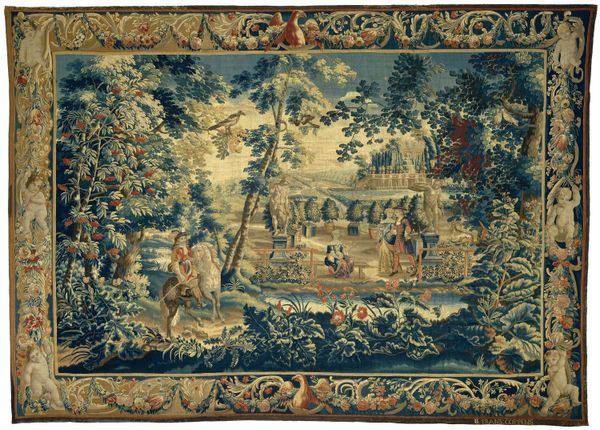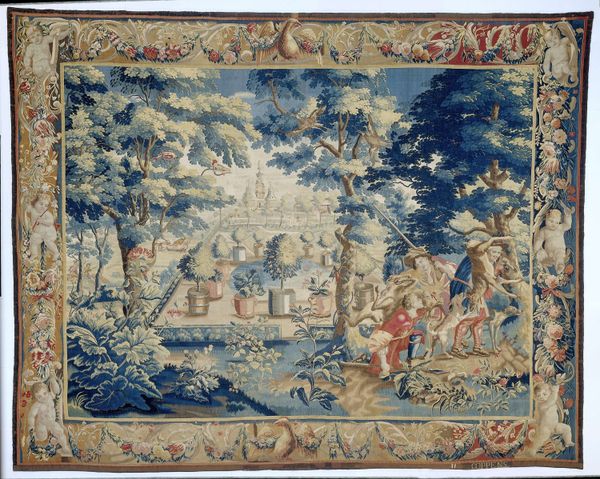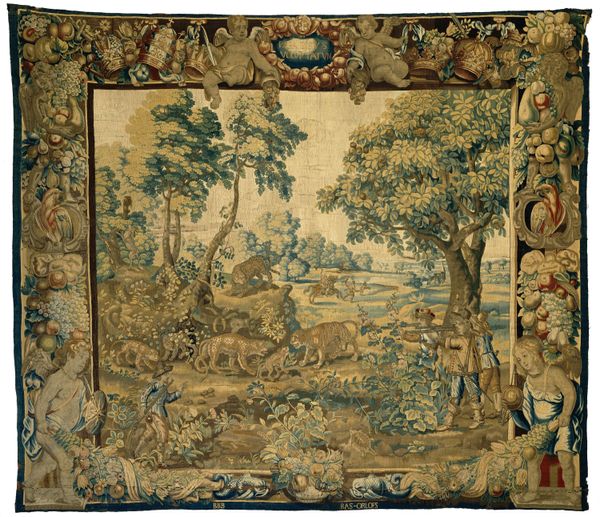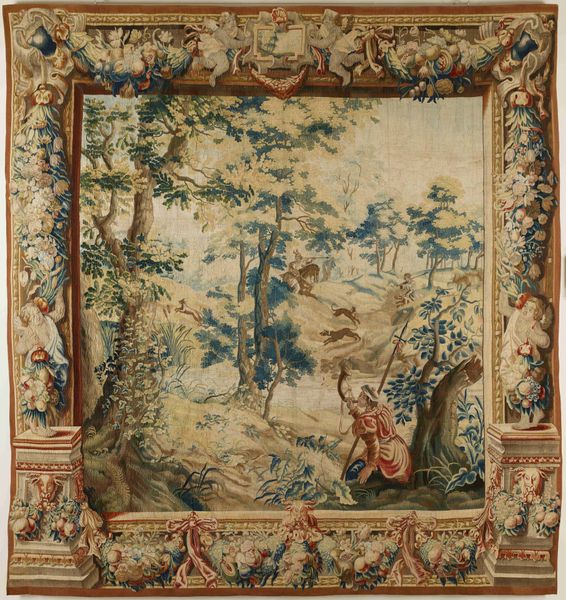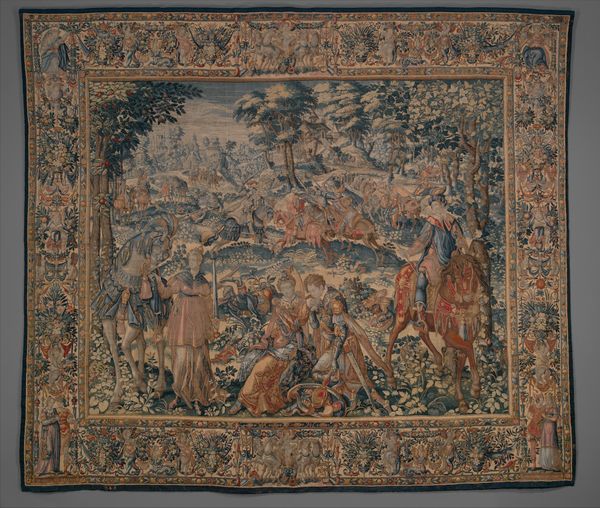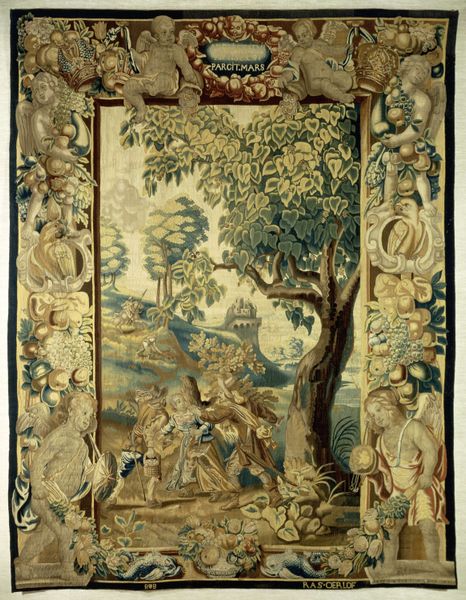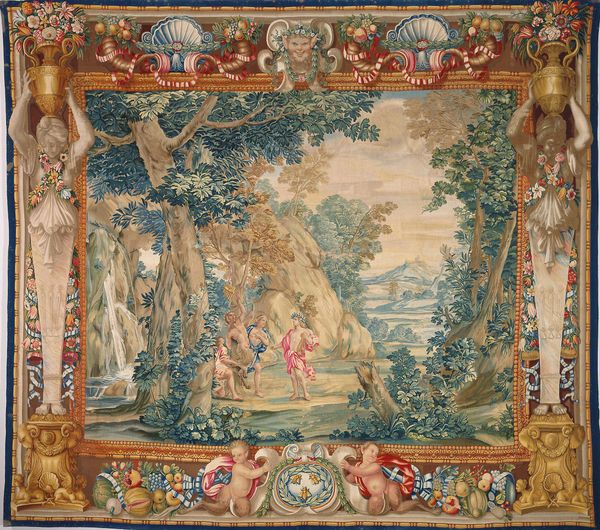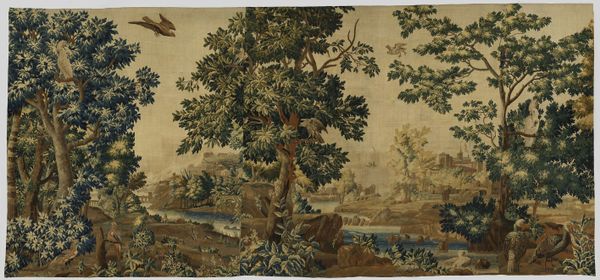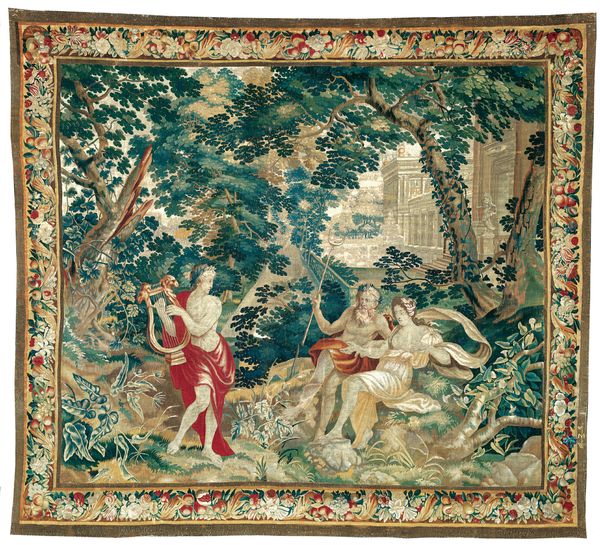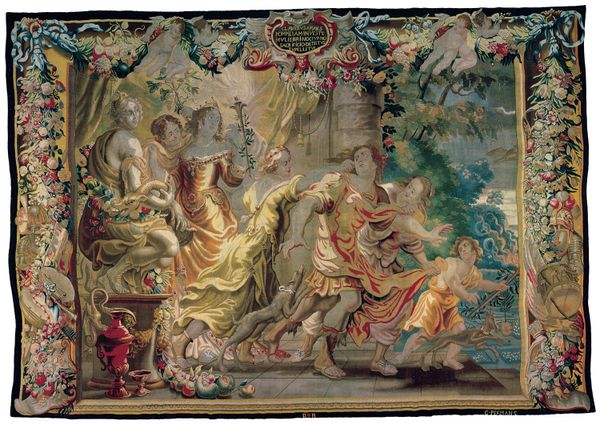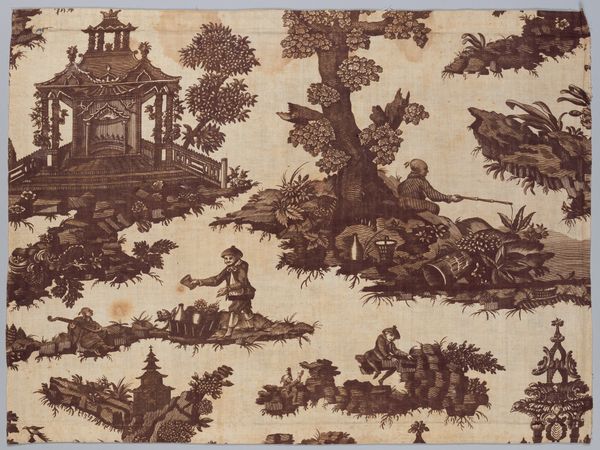
#
baroque
#
landscape
#
handmade artwork painting
#
oil painting
#
genre-painting
Dimensions: height 351.0 cm, width 558.0 cm
Copyright: Rijks Museum: Open Domain
Editor: This tapestry, “Park Landscape with Seated Couple and Resting Hunters,” was woven sometime between 1685 and 1740 by François Coppens. It’s incredibly detailed; the texture almost makes you feel like you're stepping into the scene. How would you interpret the choice to create a landscape like this, and the effort involved in creating it by hand? Curator: Look at the materials themselves. This tapestry wasn't simply a decorative object; it was a display of wealth, power, and the control of resources. Think about the wool, the dyes, the skilled labor involved in weaving a piece of this size. These are all indicators of economic status and social hierarchy. Who would have commissioned such a piece, and what did it communicate about their position? Editor: So, less about the artistry, and more about… the process and who profited from it? Curator: Precisely. The ‘artistry’ is inextricable from the material conditions that made it possible. Notice how the landscape idealizes nature, turning it into a commodity for consumption. What about the hunting scene? How does that connect to ideas of land ownership, privilege, and perhaps even colonial exploitation? Editor: I see… it reframes the whole piece. Instead of a pretty pastoral scene, it becomes a commentary on class and ownership through material expression. Are the materials themselves therefore communicating value, beyond the image they help create? Curator: Absolutely. The inherent worth of those raw materials and the labour transformed and contributed economic worth which then communicate about social dynamics of the time period and its stakeholders. Editor: That’s a powerful way to view it, thank you for widening my perspective! Curator: My pleasure. Always consider how materiality informs meaning!
Comments
No comments
Be the first to comment and join the conversation on the ultimate creative platform.
